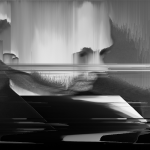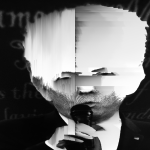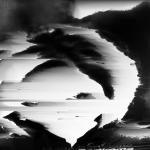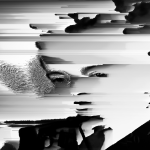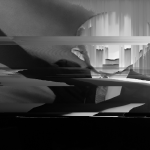22
What happened was…
I’m a huge fan of the artist Richard Prince, which I may have made mention of only a thousand times. I’m fascinated by his work – I love it, and the aspect of appropriation which he returned to a few years ago. His work made the news, and the art news. If you are unfamiliar with the story / lawsuit, here’s a link to a short version. I think much of me likes the discussion about authorship, ownership, intellectual property, etc. So, if I photograph something off of the T.V. screen it is mine right? What if two people take the same shot at the same time? Is that even possible? I suppose this thought could be similar with a camera and not a phone, but I don’t think it’s possible anyway.
During the U.S. National election debates I watched and listened to as many as I could. And, during parts where I got a bit bored or lost, I’d photograph the screen with my i-phone. I’d hold it up close at an angle to intentionally distort the image. I found myself doing this over and over, and it was easy as the speakers were on camera for good amount of time to keep getting shots. If I messed it up, I knew the camera would return and I’d get another shot. I kept collecting this library of distorted politicians.
And, that was that. I posted a few on Facebook (citing Richard Prince) and the element of appropriation. Again someone asked me what app I used. The images were funny, mostly reminding me of the video ‘Here Comes Your Man’ by the Pixies. If you have a wide angle lens, turn it to its widest, get close to a person and photograph them they will look distorted – big head – small feet. Never use a wide angle lens for portraits. I never thought that I’d use this set of T.V. images for anything until…
I got into Pixel Sorting – or – Pixel Shifting. This is something I’ve wanted to explore for years. I was going to commission a programmer to glitch photos the way I wanted to tear them apart and destroy them, but then I found the code. Turns out, it’s the same code the students use in the Maker Space at the school where I teach part time. Who knew? Just download this little bit of software called Processing and you’re golden.
This is about 350 lines of code that will move the pixels in an existing image and re-save it. There are many variables to think through and experiment with (x and y, most obviously), as well as the dimensions of the starting image. Some of the images I parted at the center, others I prefer the vertical drag. In truth, I’d keep swapping numbers or reloading code until I got an image to react a certain way.
What I love about this and what’s exciting to me is the two part process. The first image will likely have a moire pattern from the screen the image is captured from. This pattern then reacts with unpredictable results with the pixel shifting code. I left the images larger than I normally do so you can see the detail better at a larger size.
So unlike Richard Prince, I took these images so I own them right? Still trying to think of a clever title, Data Streaming – or – Data Screaming, something like that.


